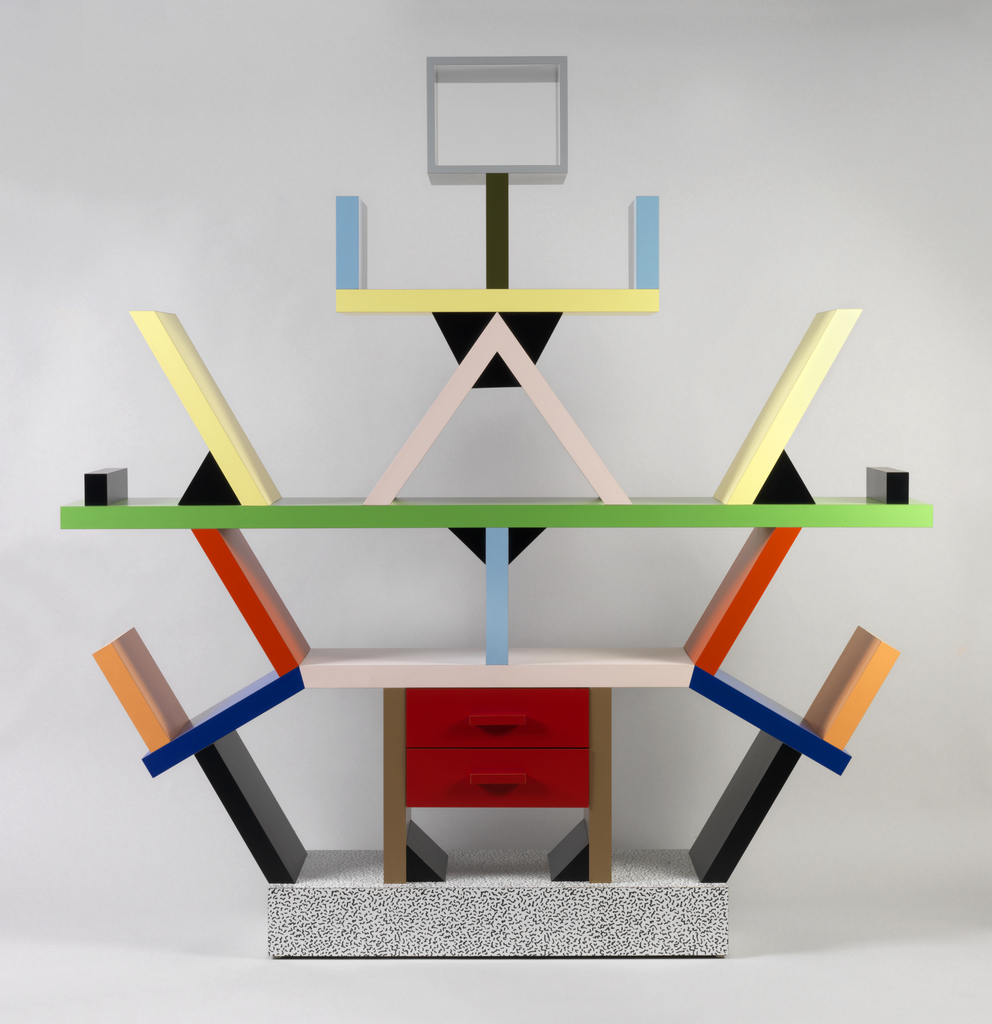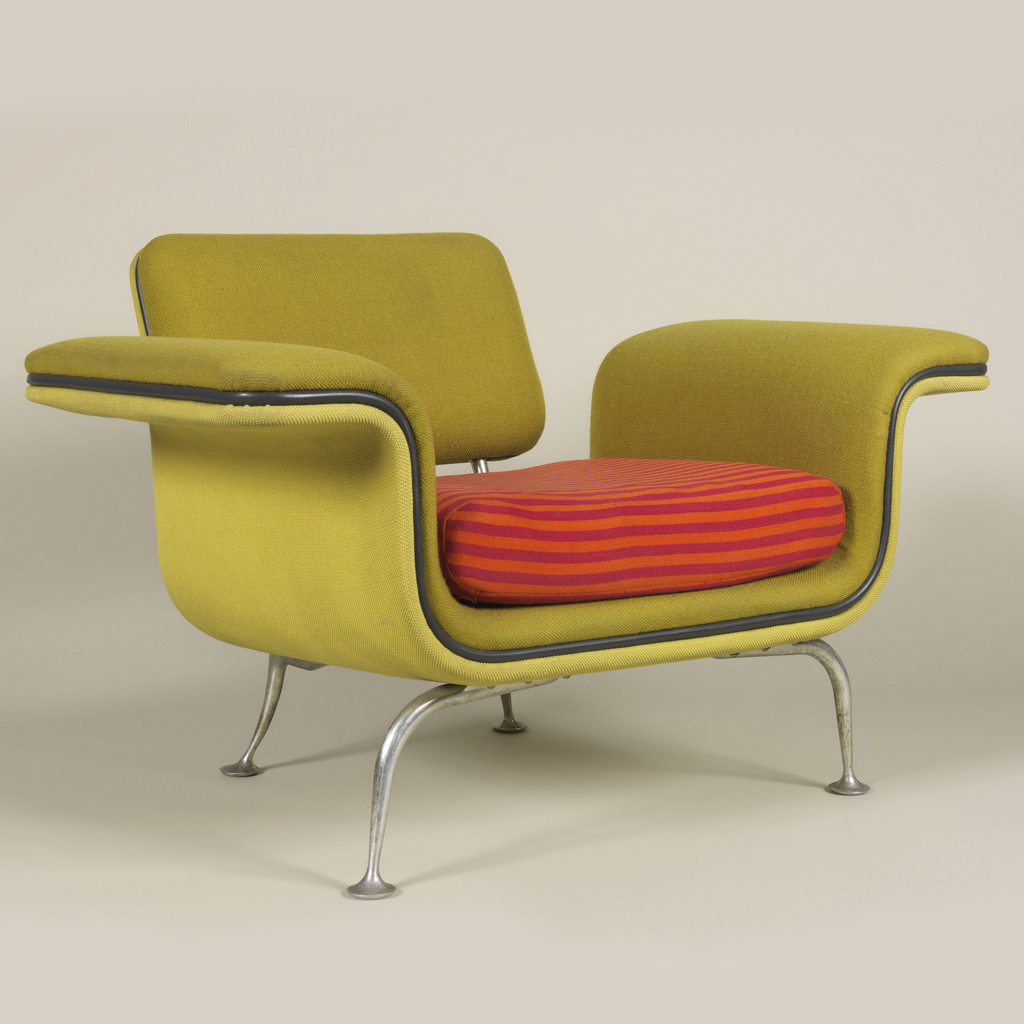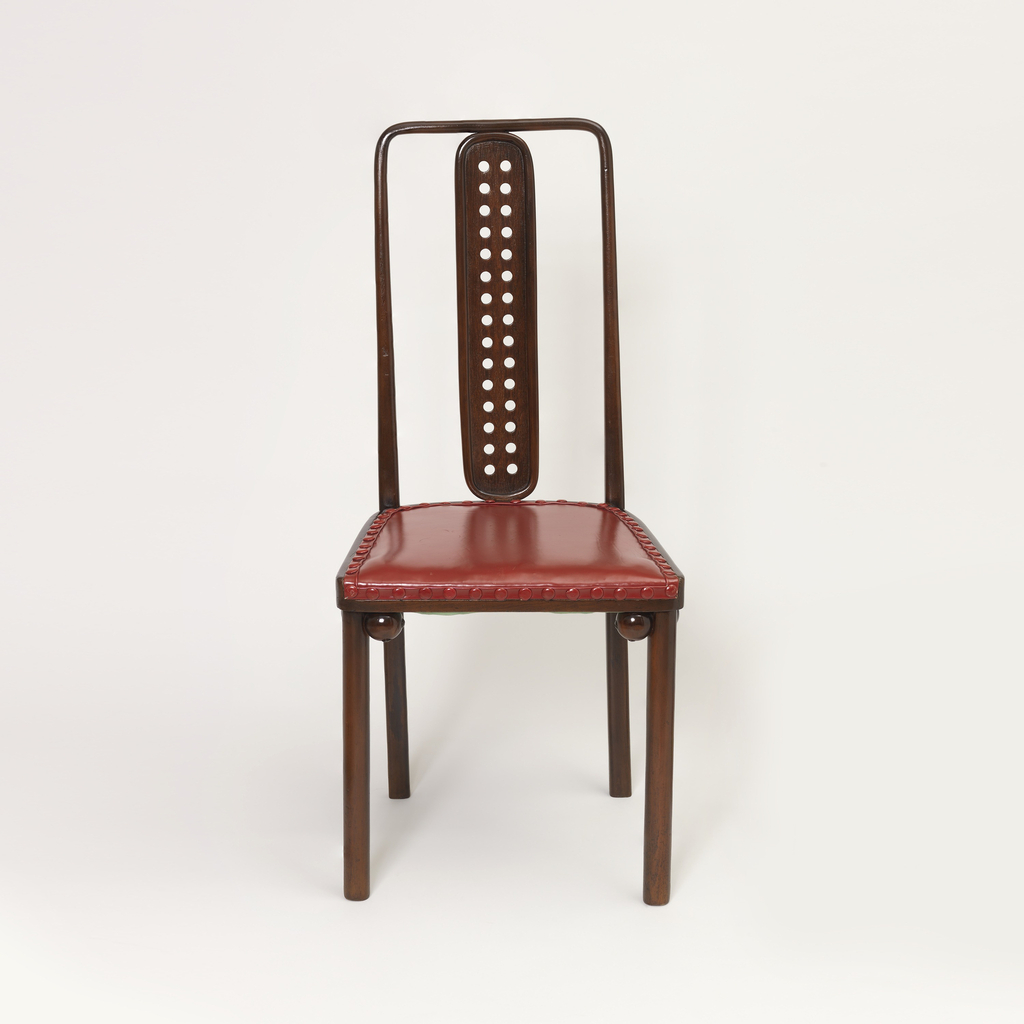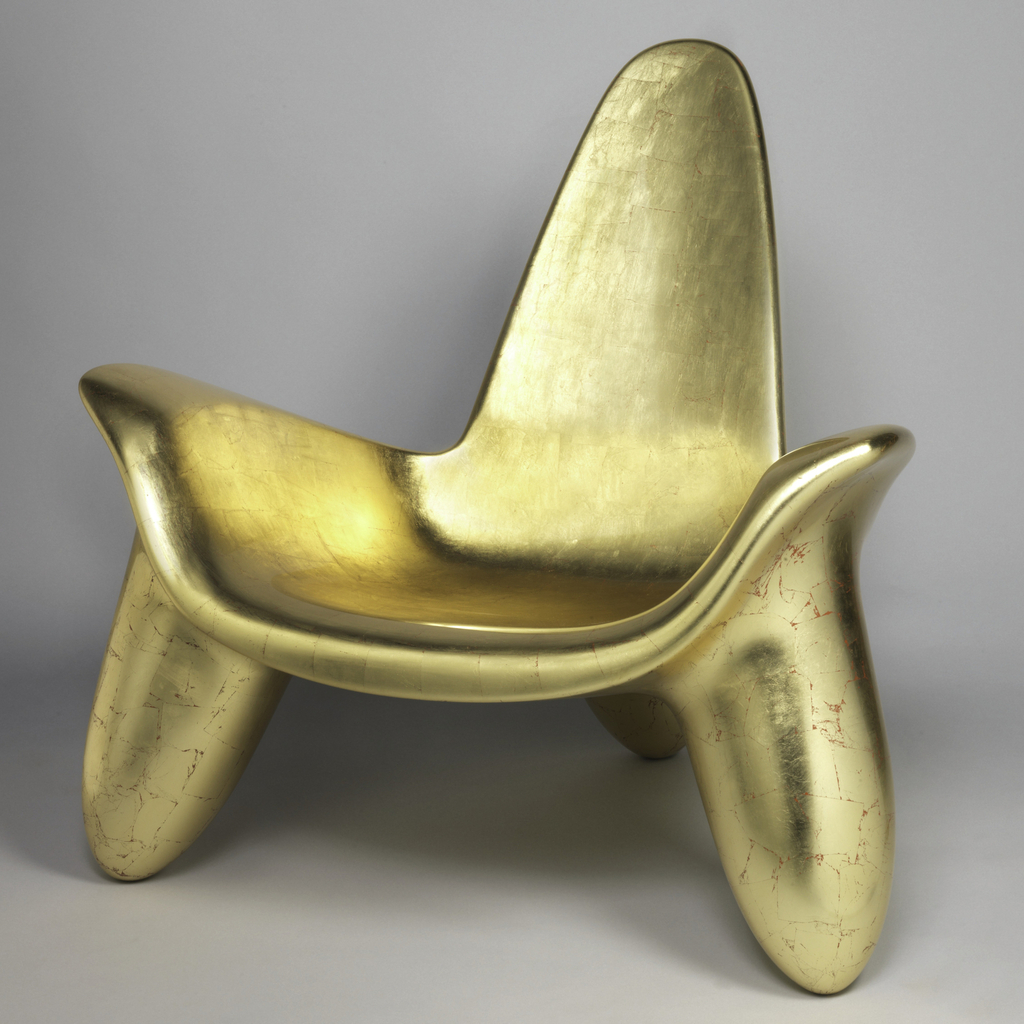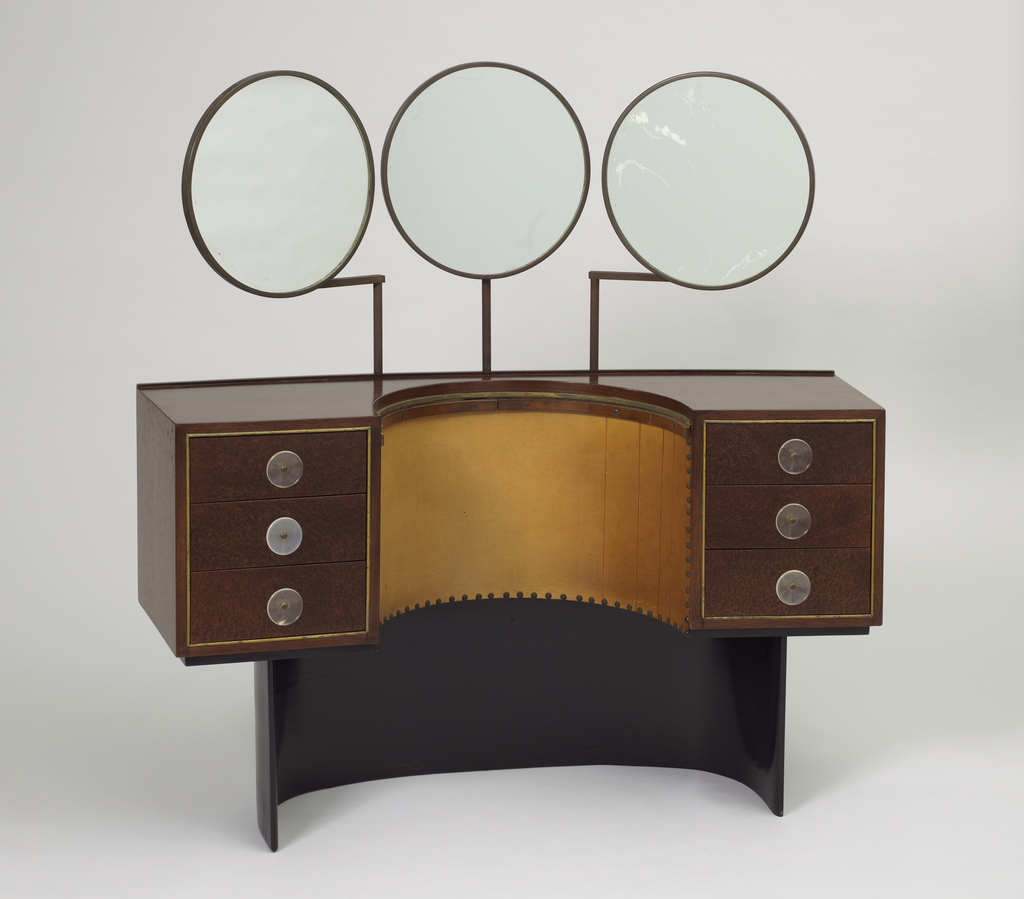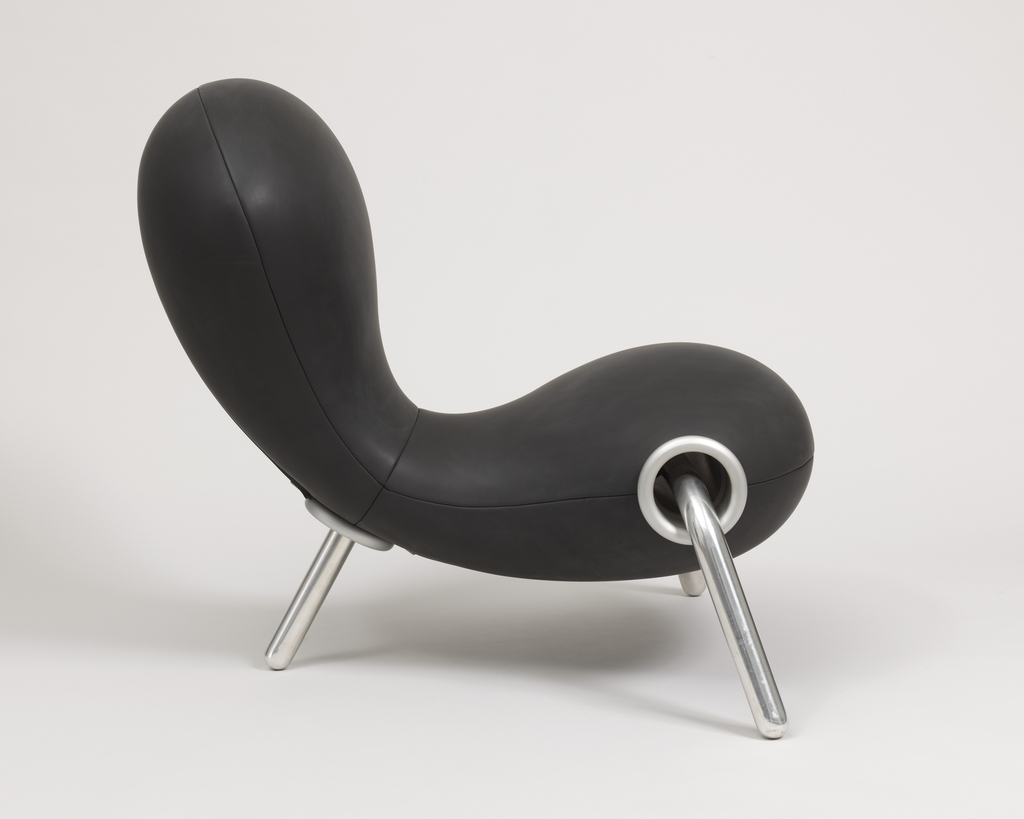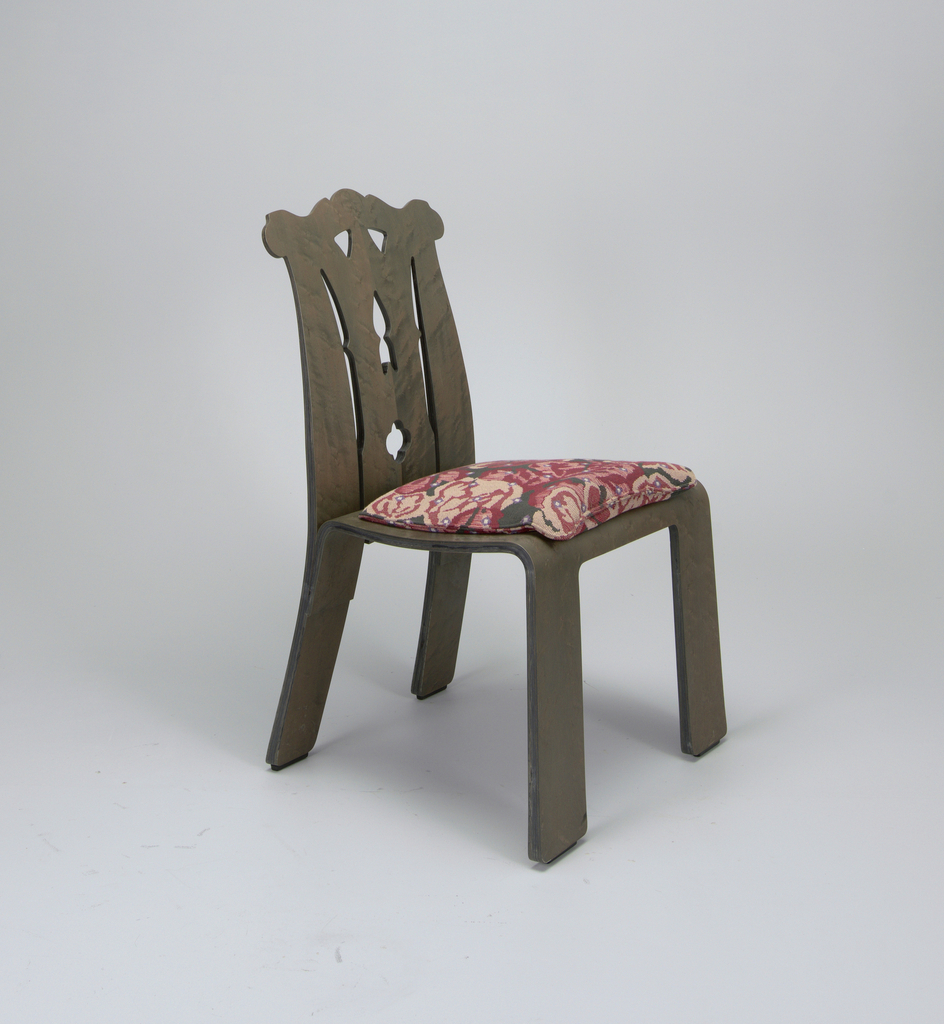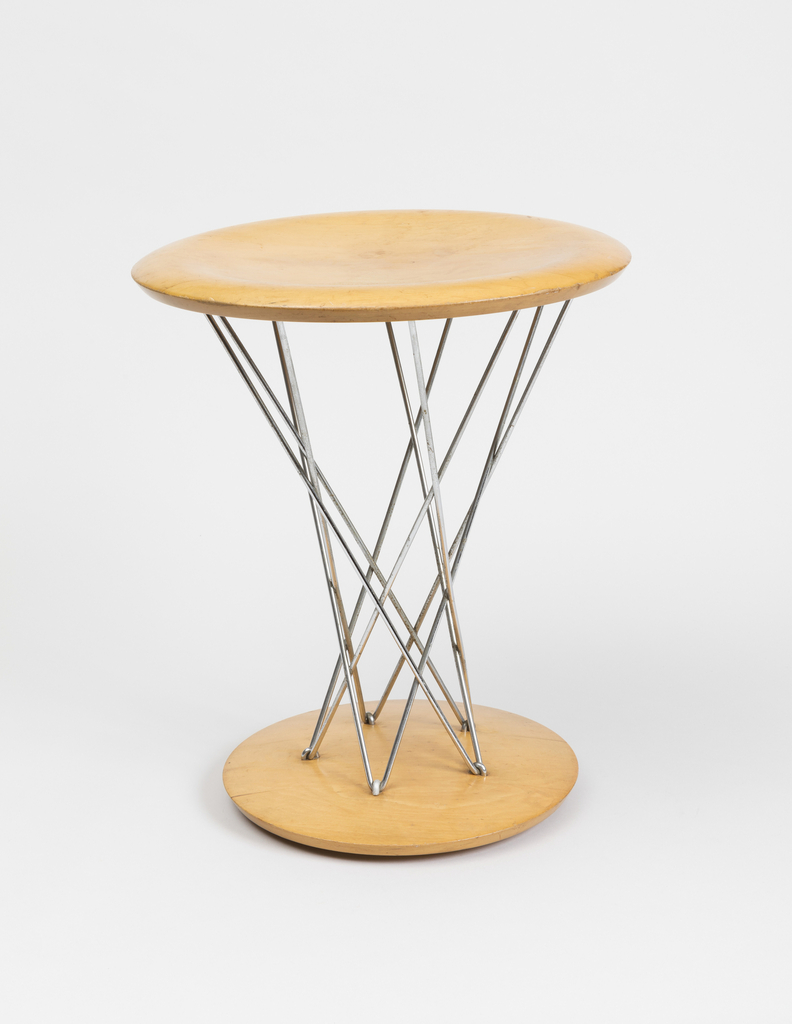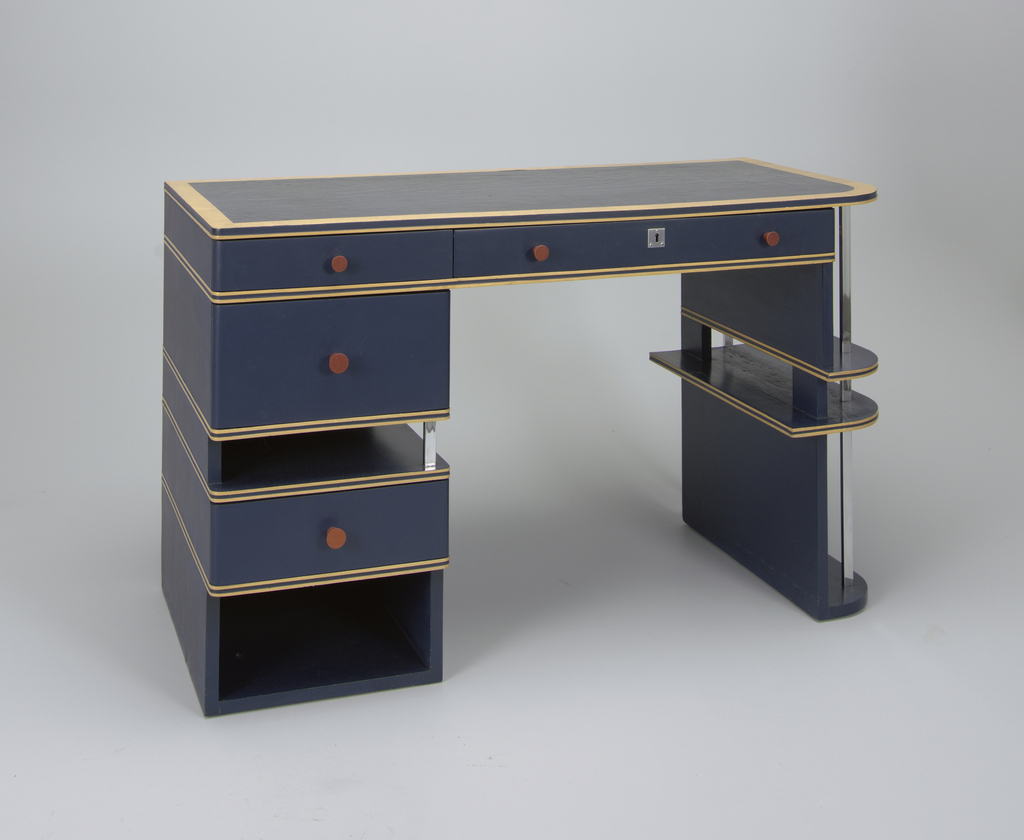Ettore Sottsass Jr.’s iconic Carlton cabinet—sometimes referred to as a “sideboard” or “room divider”—is one the designer’s most recognizable works. Its anthropomorphic form is thought provoking and yet childishly simple. The Carlton cabinet’s playfulness is asserted in its mix of garish colors, patterns, and mass-market materials—plastic laminate and wood. When Sottsass designed this piece for...
Alexander Girard was one of the most prolific interior architects of the twentieth century, one who expressed his enthusiasm for design through his vibrant use of color. Believing that modernism did not equate with the use of drab colors, he incorporated bright hues and bold geometric patterns into his designs. He developed an exciting fabric line for...
A ubiquitous figure in design history, Josef Hoffmann had a career that spanned more than 50 years. The Austrian architect-designer created this chair for the dining room of the Purkersdorf Sanatorium, located just outside Vienna, and built between 1904 and 1906. Hoffmann designed both the sanatorium’s austere exterior and much of its interior. Hoffmann worked...
Is it possible for a chair to be organic, imaginative, and even a little bit sexy? Perhaps, if it is one of the works by American designer Wendell Castle. Castle’s Triad chair is a piece composed of curvilinear sweeps of gilt fiberglass that make a strangely inviting seat. At the risk of pushing the pun...
Whether you call it a dressing table or a vanity, during the 1930s and 1940s this furniture form expressed the glamour and mystique of femininity. A woman sitting at her vanity—preparing to go out or to entertain in her home—connotes the vanity’s cultural associations with beauty, self-image, and preparation. Designed by Gilbert Rohde for Herman...
The Embryo Chair was designed in 1988 by Australian designer Marc Newson, and has come to be seen as a signature object of his organic style. The chair is not only stylish and provocative in appearance, its one-piece form and simple legs belie a sophisticated construction that is the result of Newson’s technical accomplishment early...
Since the publication of his 1966 treatise, Complexity and Contradiction in Architecture, architect Robert Venturi has been considered one of the founders of Postmodernism. Venturi challenged the modernist prejudice against ornament and traditional decorative styles, and questioned the maxim “form follows function.” The Chippendale Chair is one of a series of nine chairs in historical styles he...
Japanese-American sculptor and designer Isamu Noguchi designed this 86T Rocking Stool for Knoll in 1954. Noguchi was born in Los Angeles but lived in Japan until he moved to Indiana at the age of thirteen. After leaving his pre-med studies at Columbia University to pursue sculpture, he went to work in Constantin Brancusi’s Paris studio between 1927 and 1929, exploring abstraction and...
This desk by Paul Frankl is an example of American streamlined furniture of the 1930s. Frankl trained as an architect in Germany and Austria before settling in New York in 1914, as a decorator and designer. He created geometric furniture designs for Frankl Galleries in Manhattan. Frankl’s design philosophy centered on designing for the future,...
